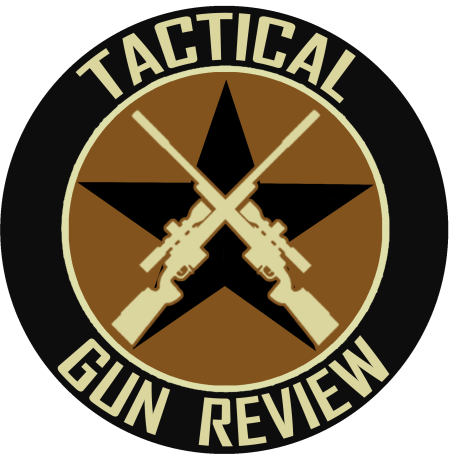First, we must define “Long Range”. What is long range to you? Webster doesn’t define “Long Range”, other than
“relating to or fit for long distances”
If you asked me that same question 20 years ago, I would have told you it was 300 yards.

I was young and naive back then, and for Christmas, purchased myself a “Wal-Mart” special Winchester Model 70 chambered in 300 Winchester Magnum, equipped with a factory bore sighted Tasco 3-9×40 scope. The closest shooting ranges I had at that time were either 50 yards indoor, or 100 yards outdoor. At 100 yards, using factory “deer” ammunition, and the supplied Tasco 3-9×40 scope, I was normally able to shoot MOA (Minute of Angle). I knew what MOA was, and at that time, that was all I strived for. I wasn’t aware, that ½ MOA or ¼ MOA was a thing, outside of benchrest, so I was content with my 1 MOA rifle. And when I say 1 MOA rifle, I am talking 3 shots, not the 5 that is the norm today.
Around the same time, I was going through the Police Academy, and all I could think about was being in S.W.A.T. I lived it, dreamed it, and although being very young, with a new baby and wife, I devoured every magazine, book, TV show, and information on “long range” shooting and Special Weapons and Tactics that I could get my hands on. This was all back when the internet was in its “puberty”. A 56k modem was the norm, DSL was fairly established with something like a 512kb download speed, and the the cable companies had just released cable internet at a blazing 1.5 mbps.
I became a member of a “gun forum”. I cannot even remember which one it was now, but it provided so much entertainment and knowledge on the subject, I stayed glued to the monitor for hours. It was this forum that advertised a, semi-local, “long range hunters match”. It was only an hour and a half drive, and on a weekend that I didn’t have to work, so I signed up.
From what I can remember, I was the youngest there by far, and I think there were only around 10 or 12 shooters. The range was 300 yards, and I had absolutely no idea of DOPE or BC, or anything like that. Each shooter had an allotted amount of range time to check his zero before the match. It took me about 10 rounds and a dime (for the scope adjustments) to get zeroed at that range. I wasn’t nervous at all, although I probably should have been, given the hardware and experience that was in attendance, but I had my cocky 20 year old attitude and confidence, and trusty Winchester Model 70 and 3 boxes of some off-the-shelf ammunition.
The good lord above must have smiled down on me that day, because I ended up winning 1st place in that match. I don’t know how or why, and would definitely agree that my equipment was not up to that task, but it happened, and just-like-that, I was hooked.
Enough about me. If you made it this far in the article, I am sure you are looking for answers. Well, I am going to give them to you, from a layman’s perspective. That’s right, I am no sponsored professional PRS guy (although I know a few), and I am not a world renowned benchrest shooter, nor am I some cool black-ops sniper. I am just the average, blue-collar guy that loves to shoot.
Absolutely the most important thing for you to do is to listen and learn from your peers in the sport. DO NOT take absolute faith in what they say. Just listen to them. Read books on the subject. Listen to others, read online articles (such as this), read forums, watch youtube videos, hell, listen to audiobooks if you want. BUT DO NOT put all your eggs into one basket. Where one person has success, the next may not. Listen to advise, after all, it costs you nothing, but as a wise man once said,
“Advice is a form of nostalgia, dispensing it is a way of fishing the past from the disposal, wiping it off, painting over the ugly parts, and recycling it for more than its worth.”
After all of that, see if it makes sense to you. If it doesn’t, chances are, its probably not going to work.
I know, I know, the first thing everyone wants to read about is rifles and calibers, so lets just jump right into that subject.
Caliber comes first… So, lets look at this from a practical point of view. Answer these questions and that will lead you to an answer.
How far is the longest distance you can shoot at a range that you have access to?
What do you want the bullet to do for you at a given distance, i.e. hunting, punching paper, banging steel?
Do you reload? Are you willing to reload/handload?
What do you want to accomplish with your bullet? i.e. competition, hunting, fun?
How much are you willing to spend? There is a law of diminishing returns, and the line is extremely fine.
Most importantly, be honest with yourself. You don’t do anyone any favors by lying to yourself. I will give you an example.
Dont be the guy that WANTS to be a tactical sniper ninja that just got his tax return and decides to build a .338 lapua and only has access to a 100 yard range. This is counter productive and in general a waste of money. Someone in this situation would probably be better served with something like a bolt action .223 from a practical point of view.
So, since I have to write this based on assumptions, lets throw out a few different scenarios. I am a layman after all. So, for the sake of argument, lets cap this at 1000 yards. I personally only have access to 3 ranges further than this, and for most people, 1k is bragging rights.

Scenario 1:
“I want to get my toes wet on a practical budget with FACTORY ammunition.”
Of course you know I am going to say .308. Yeah, its not en-vogue anymore, but its still chambered in just about every rifle from every manufacturer in every configuration you could think of. This is, in my opinion, still a very viable caliber. Federal Gold Medal Match in the 168 grain or 175 grain flavor are going to be about as accurate as you can find in factory ammunition. The 175s will take you to 800 yards easily in a good rifle, and still have decent enough energy to take down a man sized target. This round is inherently accurate, and efficient from a handloaders perspective. Brass and bullets are plentiful, spanning a wide range of weights and profiles.
300 Winchester Magnum.
Everything I stated about the .308, you can go ahead and apply it to the 300 Win Mag and add on another 300fps give or take. On top of that, Federal offers the Gold Medal Match with a 190 grain Sierra Matchking bullet with a .533 ballistic coefficient at 2700 fps which should keep you supersonic out past 1100 yards. More on this later.
Oh, and I know you were waiting for it. 6.5 Creedmoor.
The factory load has been known to, in custom rifles, to shoot under half MOA. It uses the new Hornady 140 ELD bullet with a .610 BC at an advertised 2710 fps for a supersonic flight all the way past 1300 yards at half the recoil from the 300 Win Mag at the cost of some foot lbs of energy on target due to the lighter bullet.
There are maybe a rare couple of calibers that can compete with the three I have listed that have factory MATCH loaded ammunition AND are a commonly chambered cartridge in factory rifles. For the guy that wants to shoot long range and not reload, AND use an off-the-shelf rifle, these are going to be your best bet.
Scenario 2:
“I am a handloader, but not going to invest in a full custom rifle”
This opens your options up considerably. Handloading, even with a factory rifle, can increase accuracy exponentially.
Lets look at the .243 rifle that you have set aside for your son/daughter to hunt with. Load that sucker with a Berger 87 grain VLD at 3200 fps and you will be supersonic to 1100 yards. Load the same .243 with a Berger 105 grain Hybrid to a sedate 3000fps, and your supersonic to almost 1400 yards. The target below is from my factory Remington 700 VSF shooting the previously mentioned 105 Berger Hybrid handloads.

Also, we can look at the same 300 Winchester Magnum mentioned previously, and load it with a 200 grain Berger Hybrid at 2900 fps, and we are still supersonic at 1500 yards, vs the 1100 yards using factory ammunition. This is a HUGE difference in terminal ballistics.
If you are going to be dedicated to “long range”, handloading really opens up worlds of possibilities for you.
Scenario 3:
“Ive got money, time, experience, and I handload, and want the best cartridge out there”
This is where things can get dicey. When you have this sort of blank palette to work with, you can pick and choose calibers based on how you feel that day. There are literally that many calibers out there that will deliver the external ballistics to take you to 1000 yards and well beyond.
One of the more popular “off the shelf” propositions would be the .338 Lapua Magnum. This rifle was developed in the 80’s specifically as a long range military sniper round. It shoots a variety of bullet weights with reasonably high ballistic coefficients at a moderate to high velocity. Factory ammunition can be found at most outdoor stores, i.e. Cabelas, Bass Pro Shops, Academy. Keep in mind though, most match grade loaded ammunition will cost you about $5 per round, so handloading will be something to look very hard at.
375 Cheytac, 408 Cheytac and 416 Barrett. I clumped these 3 cartridges together because they are very similar in external ballistics and overall performance. While there are “factory loads” for these rounds, I would consider them prohibitively expensive, sometimes around $8-$10 per round. Most, if not all of these cartridges will utilize machined brass or alloy bullets with extremely high ballistic coefficients that keep them supersonic out past a mile, and even keep them stable past transonic flight.
This is of course not an “all-encompassing” list, and I am sure some readers will point out my omissions on their favorite long range caliber. Unfortunately there are too many to list, and with the never ending evolution of long range cartridges, there will probably be something new released before this article “goes to press”
Be sure and keep your eye out for the next chapter, “Long Range Rifles and Equipment”
Clint
Clint Davis
Latest posts by Clint Davis (see all)
- SO, YOU WANT TO SHOOT LONG RANGE? PART 2 - December 6, 2017
- SO, YOU WANT TO SHOOT LONG RANGE? - November 7, 2017
- Precision Rimfire: A Primer - October 28, 2017




Well it was a long article but it was worth reading.
Well written and informative.
Really nice article. Thanks